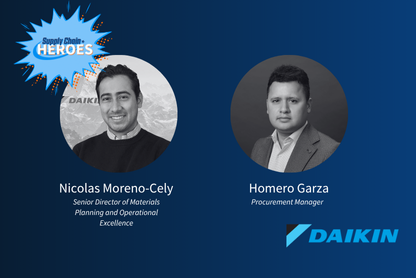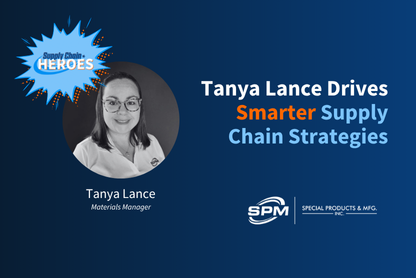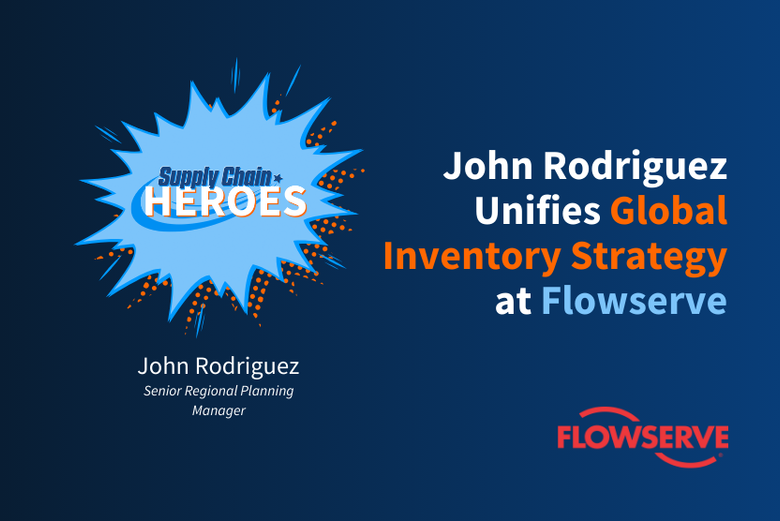Case Study | JR Automation
Key Challenges:
- Slow improvement cycles: Most continuous improvement initiatives took over a year to complete and often stalled due to resource constraints.
- Lack of bottom-up engagement: There wasn’t a scalable or fast way for employees to share improvement ideas, despite visible opportunities across the organization.
Key Results:
- Faster execution on improvements: 2-week average from idea to action
- Strong employee engagement: 100+ employee-submitted ideas in year one
- Scalable cultural shift: Program expanding across sites and fueling problem solving
Overview
LeanDNA success stories are often focused on supply chain teams optimizing inventory, reducing shortages, and improving on-time delivery. The JR Automation story, offers a different lens into the platform. Their Continuous Improvement team is using the Lean Projects module—designed specifically to support standardized, team-driven improvement initiatives— to power a “Waste ID” program that captures employee ideas and turns them into real results. It’s a great example of how LeanDNA’s purpose-built modules can serve different teams across the business, from supply chain to continuous improvement, each driving impact in their own domains.
JR Automation provides intelligent automated manufacturing and distribution technology solutions that transform how the world's leading manufacturers make and distribute products. With more than 2,000,000 sq. ft. of automation and engineering space around the world, JR Automation provides global customers with seamless solutions, connecting the entire value chain with data to achieve total optimization.
Historically, most of JR Automation’s continuous improvement initiatives took more than a year to complete. These efforts—often Six Sigma DMAIC projects —could stall when resources weren’t available. Like many organizations, a lot can change over the course of a year and the rate of change wasn’t responding to the organization's needs. While opportunities for improvement were visible at every level of the organization, there wasn’t a fast or scalable way for employees to share their observations or make changes.
To address this gap, JR Automation launched the Waste Identification (Waste ID) program, an initiative designed to crowdsource improvement ideas from the people closest to the work. By combining LeanDNA’s Lean Projects capabilities with a culture of bottom-up engagement, JR Automation has transformed how it listens to employees, responds to feedback, and takes action.
The Challenge: Creating a Path for Rapid Improvement
When JR Automation looked at their annual employee survey results, one message stood out: “My company is striving to eliminate inefficiencies, roadblocks, and bureaucracy” was consistently the low-rated item in company surveys.
“We had to look in the mirror and face a hard truth: employees were telling us they didn’t feel heard. Rather than design a top-down fix, we decided to lean in and listen deeply. Waste ID was derived from reflecting on pain to make progress.” -Ryan Wasko, Director of Continuous Improvement at JR Automation
At the company’s Continuous Improvement Summit, JR Automation was navigating a period of leadership transition, which meant there wasn’t a defined top-down directive for improvement initiatives yet. The Continuous Improvement team saw an opportunity to take a different approach. They flipped the script, launching a bottom-up foundation for continuous improvement built on employee engagement, empowerment, and rapid response.
The Solution: Leveraging LeanDNA to Launch, Scale, and Sustain the Waste ID Program
The Waste ID program encourages every employee, across any function, to observe and submit instances of waste in their daily work. The program teaches skills needed to visualize material and information flow, enabling teams to identify waste and uncover improvement opportunities. Each employee badge includes a QR code, which links to a form and a guide to the 8 Wastes (Defects, Overproduction, Waiting, Not Utilizing Talent, Transportation, Inventory, Motion, and Excess Processing).
The Employee Experience: See, Submit, Solve
- See – Employees are trained to identify waste.
- Submit – A QR code links to a submission form, which is used to create an initiative in LeanDNA using a standardized lean project charter.
- Solve – Submissions are reviewed by Continuous Improvement and management teams for refinement, scoping, and prioritization. From there, they are either acted upon or moved to the parking lot stage.
This intuitive workflow makes it easy for employees to engage—and just as easy for their ideas to gain traction.
LeanDNA in Action: Behind the Scenes
“We needed a system that could match our intent, a way to scale employee-driven improvements with speed, clarity, and accountability. LeanDNA became that backbone. It ensured no voice got lost in the noise, and every idea had a chance to move from spark to solution.” -Sandeep Kolla, CI Specialist at JR Automation
LeanDNA, specifically the Lean Projects feature, plays a critical role in making JR Automation’s Waste ID program a scalable, sustainable success. Lean Projects is a centralized hub for managing and executing continuous improvement initiatives. It provides a standardized, collaborative platform where teams can track progress, stay accountable, and drive timely execution through automated alerts and reminders. With a searchable database of current and past projects, it also supports effective reporting and regular project reviews.
Teams can set strategic goals within the platform and directly link improvement initiatives to those goals— keeping every project aligned with broader business objectives. Built-in metric tracking makes it easier for teams to quantify results. Configurable savings and spend categories allow users to report tangible financial impact. Using LeanDNA’s integrated Hoshin Kanri X-matrix, teams gain a clear line of sight between frontline improvements and enterprise-level strategy.
Using the platform’s Lean Projects capabilities, JR Automation has automated, standardized, and streamlined its entire improvement process:
- Submission to System: As soon as a form is submitted, LeanDNA’s API triggers the creation of a Lean Project using a pre-configured “Waste ID” template.
- Triage and Evaluation: Functional leaders and area approvers evaluate each submission. Using LeanDNA, they assess the scope and determine whether it should move forward as a continuous improvement initiative.
- Execution and Follow-Through: If approved, the project is assigned, tracked, and managed in LeanDNA. The tool provides task tracking, savings documentation, alerts, and accountability for follow-up actions.
“LeanDNA instills discipline to JR Automation’s employee feedback loop, which is the cornerstone of our continuous improvement culture.” - Kerry Sokolowski, CI Specialist at JR Automation
Waste ID submissions also serve another purpose: fueling the company’s Six Sigma Yellow Belt training program, where DMAIC fundamentals are taught and applied to real-world problems. As aspiring problem solvers seek certification opportunities, these submissions create a ready-made pipeline of meaningful, hands-on projects.
The Results: Empowered Employees Driving Meaningful Change
Since launching the Waste ID program at its first site, JR Automation has rolled it out at three of fifteen locations. In the first year, the program generated over 100 employee-submitted ideas—and they keep coming in at a rate of 1–2 per week. The average time from submission to action is just two weeks. That feedback loop is now measurable, consistent, and visible. In fact, employees from sites where the program hasn’t yet launched are already submitting waste observations—they don’t want to wait.
The feedback received from employees has been overwhelmingly positive.
- “The Waste ID program gave me a voice because I know that my feedback will be followed by action.”
- “The speed that the program operates with is impressive and the key to its success.”
- “The Waste ID program is shaping the culture we want to drive in the organization.”
Each individual improvement may be small, but together they drive measurable change.
“This program isn’t about making large leaps at a time. We are about moving one step forward every day. Over time, those small steps create massive improvements.” Bernd Koper, Process Improvement Lead at JR Automation
A New Model for Employee-Driven Transformation
Waste ID has become more than a submission program—it’s a company culture of lasting sustainability and continuous improvement. By listening instead of pushing, JR Automation created a program that took root organically. Employees feel heard, empowered, and invested in the changes they help create.
“We didn’t talk. We listened. We didn’t push. We pulled. Waste ID grew not because we mandated it, but because we nurtured it. That’s what real cultural change looks like: empowering people, building systems that scale, and staying grounded in the voices that matter most.” -Ryan Wasko, Director of Continuous Improvement at JR Automation
Get a copy of this case study as a PDF: Download Now.
Ready to empower your organization with a smarter approach to continuous improvement? Schedule a demo with one of our experts.






